By Pete Vack
From the VeloceToday archives, February 2009
When you read the letters CD in terms of aerodynamics, it is usually assumed that they stand for “Coefficient of aerodynamics”, Cd, or Cx as some would have it. Others would have it differently, for the letters CD also stand for Charles Deutsch, whose lifelong ambition to create efficient race cars has been largely overlooked and yet is so important.
We have previously published a four-part series on the Deutsch-Bonnets at Sebring. Charles Deutsch and Rene Bonnet, after building a series of successful Deutsch-Bonnet cars, split up in 1961; Bonnet was instrumental in the creation of Matra cars, while Deutsch concentrated on designing highly efficient race cars for both Panhard and Peugeot.
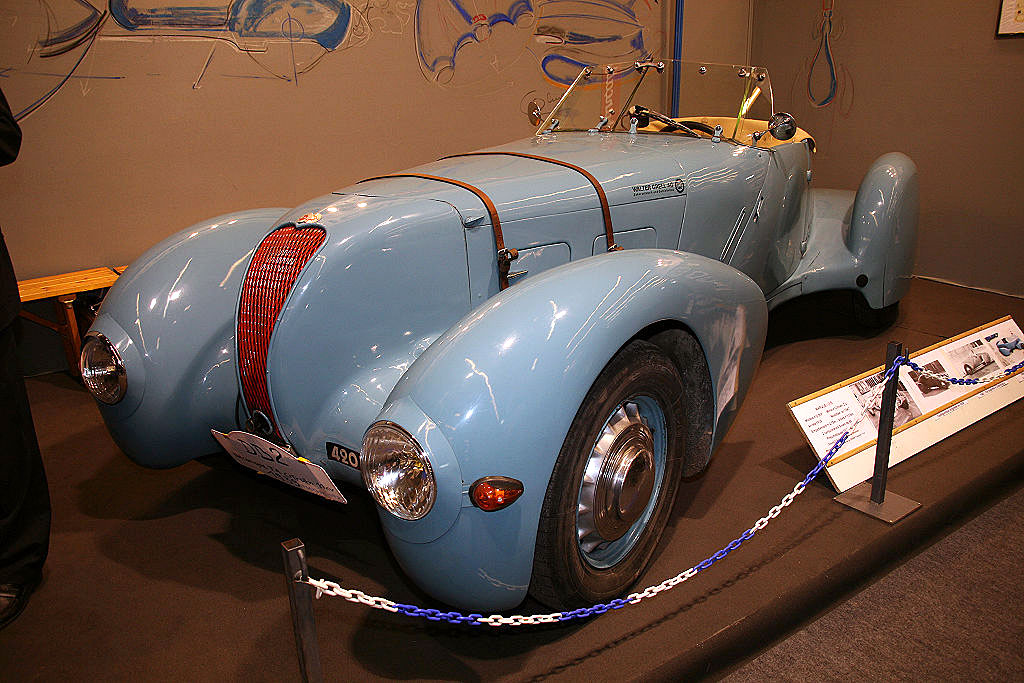
The first D.B. was a coupe, the second, built in 1939, was a roadster. Both were powered by a 2 liter Citroen engine and streamlined. Photo by Hugues Vanhoolandt.
From his first Citroen-based car in 1939 constructed with Bonnet to the CD Peugeot designed for the 1966-67 Le Mans, Deutsch’s cars were always light and highly streamlined. Perhaps the best example of his work with aerodynamics is the Panhard-CD, built for the 1964 LeMans, which achieved a Cd/Cx rating of 0.12, the lowest ever achieved for any racing car.
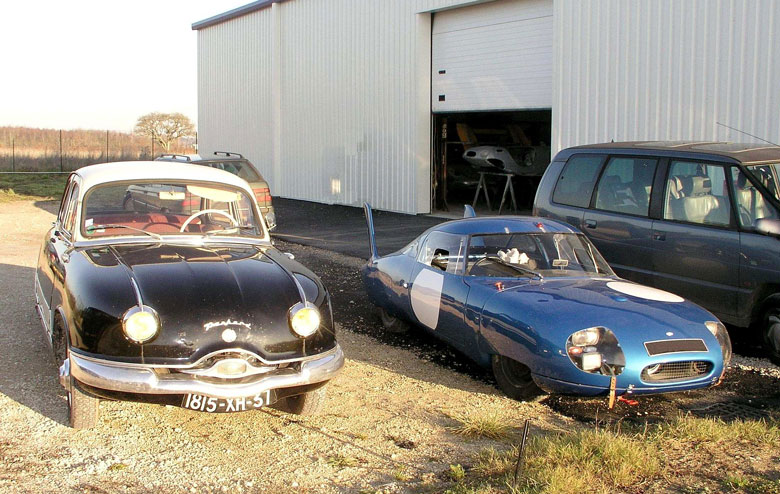
On the left, the production Dyna Panhard, on the right the CD, which used the same flat twin engine. Photo courtesy Autodrome Paris.
Always conscious of gas consumption, in 1959, perhaps as an indirect result of the Suez crisis, the Le Mans organizers created the Index of Thermal Efficiency. Unlike the Index of Performance, which was based on engine displacement, the Thermal Efficiency Index took into account speed, weight and fuel consumption. The Index also posted the gas mileage (Imperial gallons)of the cars at racing speeds. The D.B. Panhard won the first Index, with 25.69 mpg and only 744 cc. The next year, the D.B. managed the highest gas mileage figure ever at Le Mans, 37.58 mpg. But the Lotus Elite was faster, and won with a 1216cc engine getting only 21.87 mpg. Rene Bonnet’s car would win the Index in 1963 with 1108 cc and 22.63 mpg.
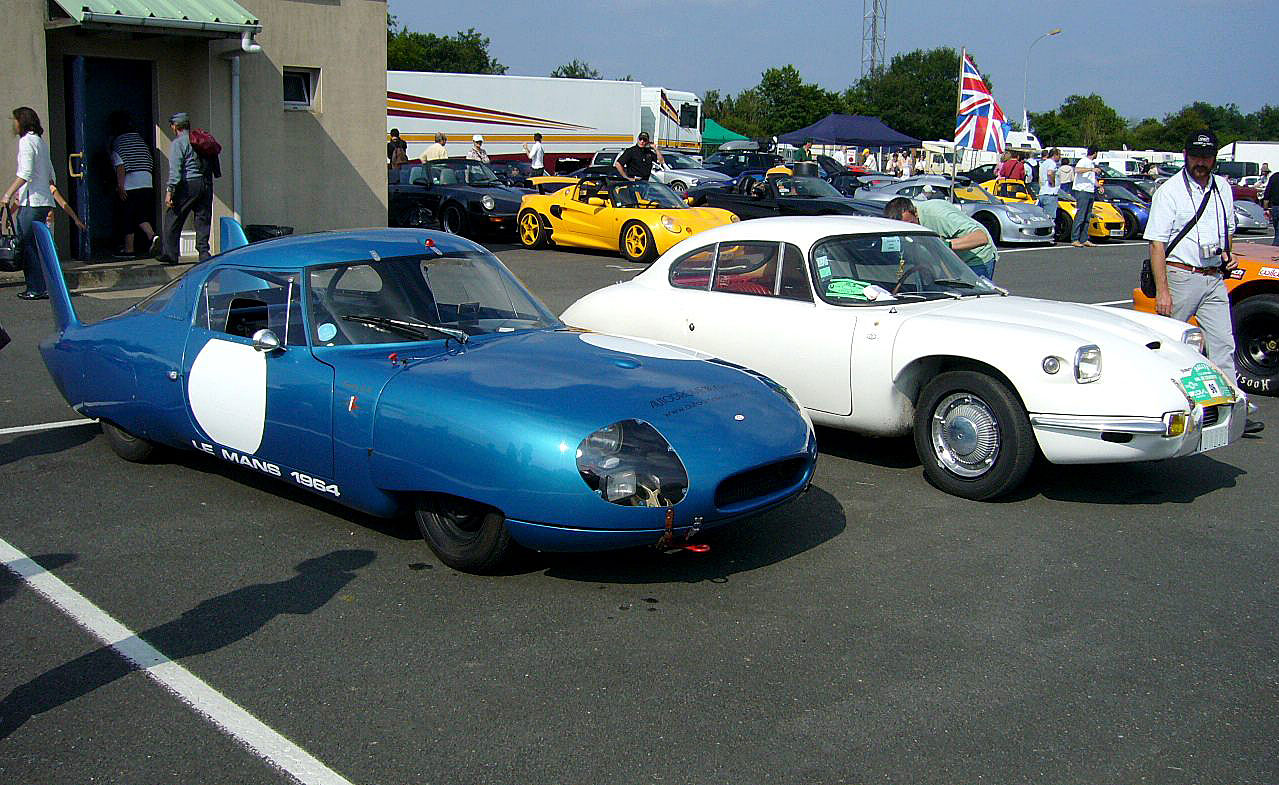
The Panhard-CD next to the white Panhard-Levassor CD Coupe. A CD Panhard similar to the white car won the Index of Performance at Le Mans in 1962 driven by the team of Gilhaudin and Bertaut. Photo courtesy Autodrome Paris.
It seemed like the under one liter cars were no longer able to win the Index of Thermal Efficiency, and as the speed differential rose, the cars became increasingly dangerous obstacles for the huge Fords and Ferraris. In 1964, no cars with less than one liter were allowed to compete at Le Mans.
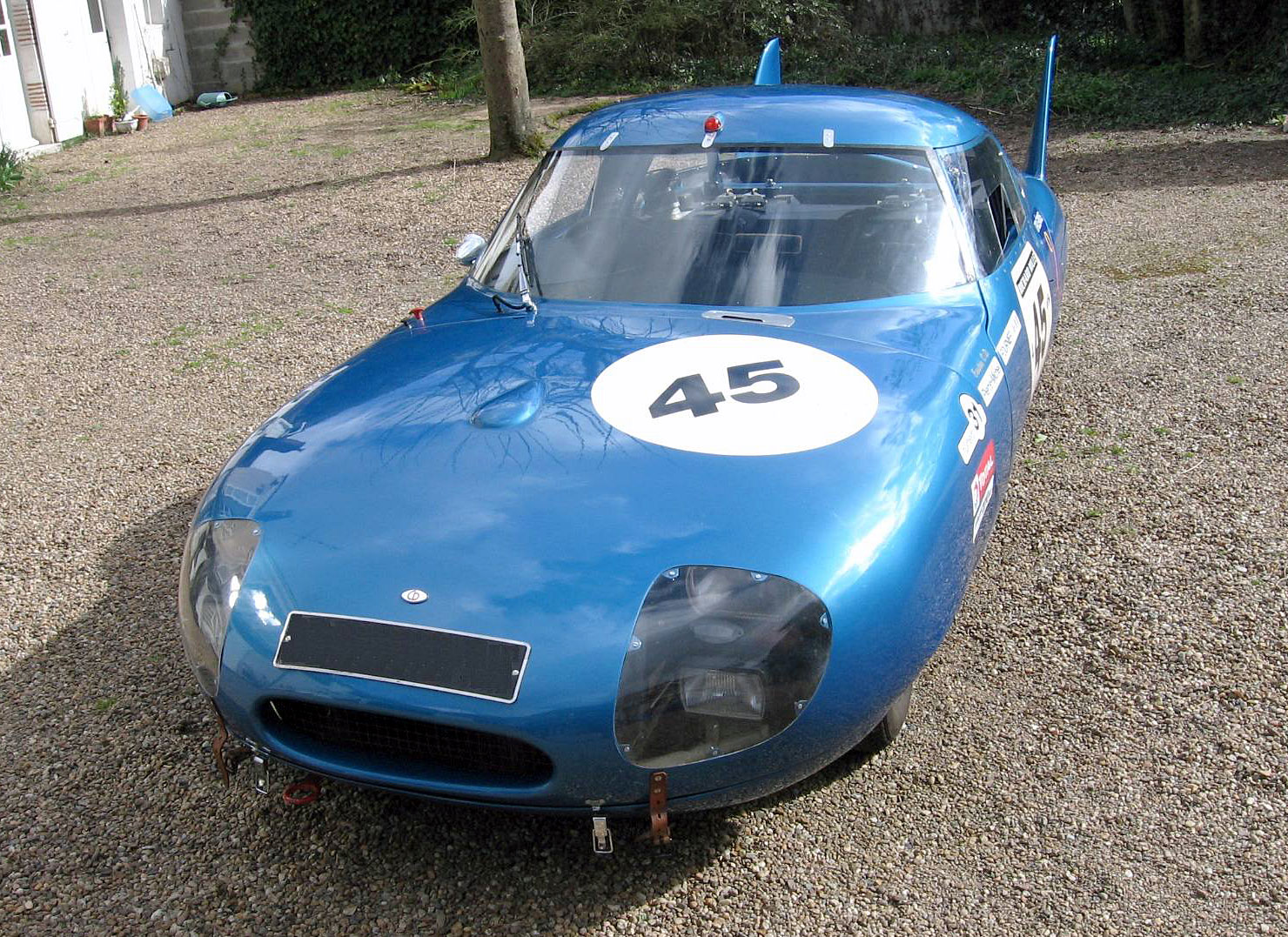
The Panhard-CD was capable of speeds above 140 mph with only 70 hp on tap from a two cylinder supercharged engine. Photo courtesy Autodrome Paris.
This did not stop the irrepressible Deutsch. Still using the age old Panhard flat two cylinder engine, now with 848.2 cc, twin ignition and two Zenith carbs, Deutsch found a way to keep the Panhards in the chase. Under the rules, if a car was supercharged, it would effectively increase the displacement. The supercharger was needed not to increase power but only to meet the new Le Mans regulations. With a 1.4 multiplication coefficient, the 848 cc engine was allowed to race in the “less than 1200 cc” class.
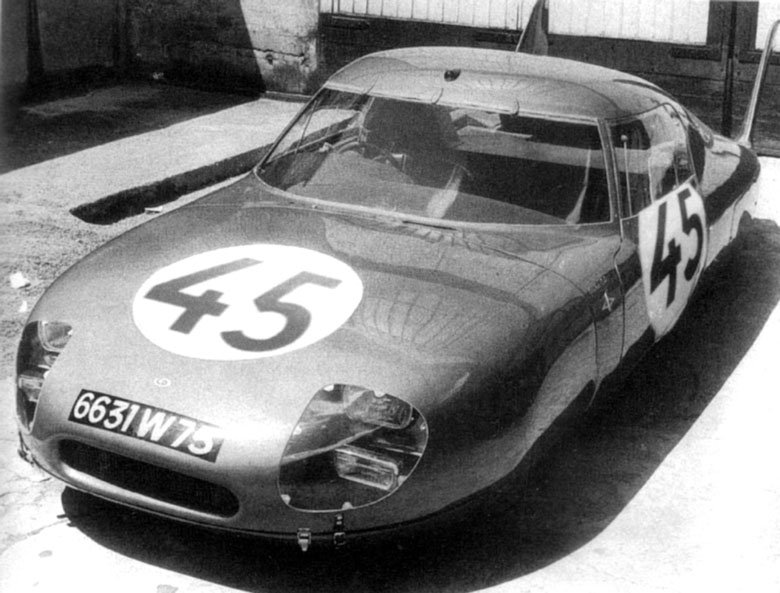
The Panhard-CD exhibited at Retromobile by Autodrome is chassis #LM64-01, race number 45, driven by Pierre Lelong and Guy Verrier. The car retired at 4.00 AM, after twelve hours, due to a failure in the transmission. Photo courtesy Autodrome Paris.
Michel Levy of AUTODROME PARIS (Automobiles Classiques et Sportives) told VeloceToday, “Maximum speed was 230 km/h (142 mph), as indicated on a document from CD that I have in the history file of this car. Maximum speed was of course depending of engine and supercharger adjustments, and for the race the target was the lowest ratio between fuel efficiency and power. I also have a document from Charles Deutsch stating that since the measured speed with a 60 HP engine was 211 km/h, the expected maximum speed with an improvement of 40% of the CX would be 250 km/h. This is the theoretical maximum speed of the Panhard-CD 1964, with 60 HP. However, with the supercharged the actual power delivered by the engine was 70 HP.”
According to the radar guns at Le Mans, the CD was timed at 137.5 mph, tuned to give the best overall performance, not speed! However, since the car did not finish, the gas mileage was not listed in the results. It remains to be seen what gas mileage figures the car could obtain at racing speeds, but it would probably better the 37.58 mpg achieved in 1960.
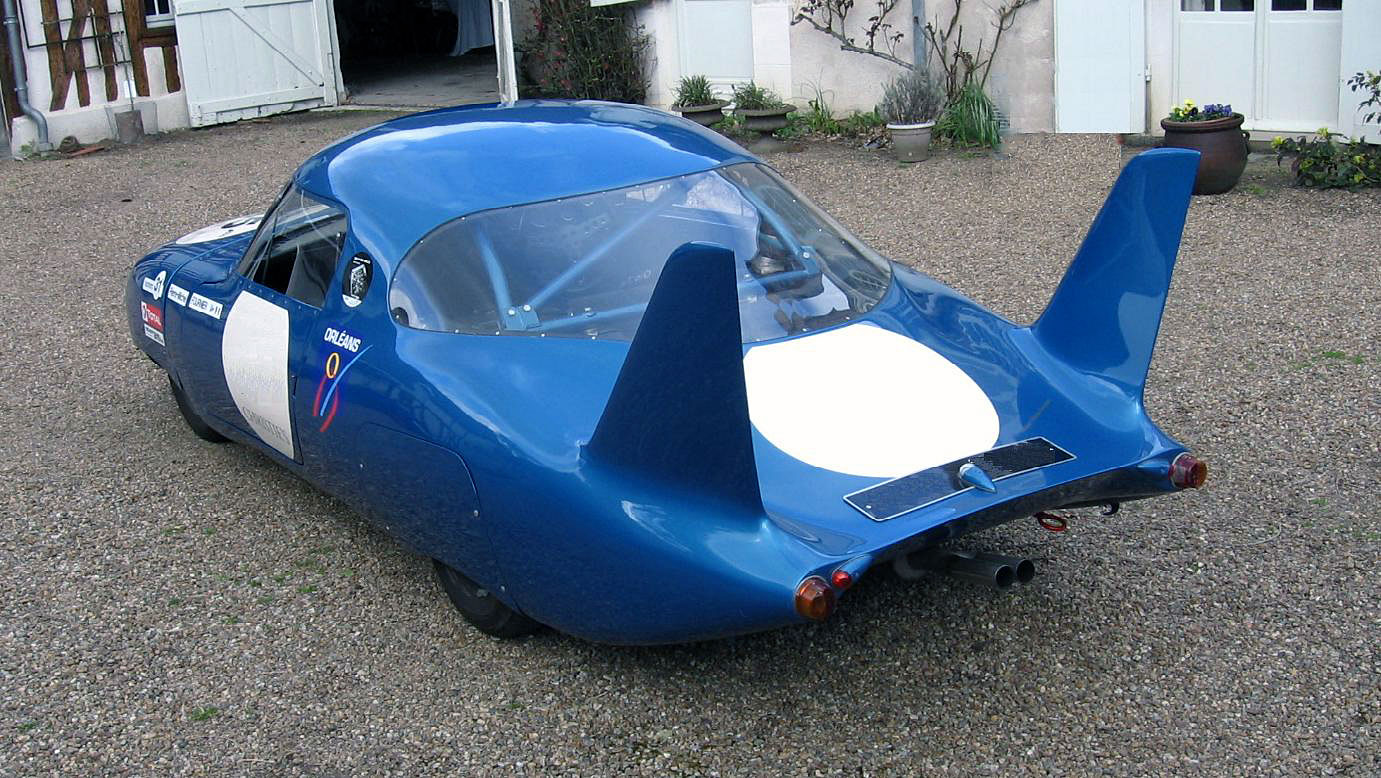
The Panhard-CD remains one of the most revolutionary and important Le Mans Prototypes in history, both for its aerodynamic and dynamic research by Charles Deutsch, and for its place in history of Panhard. Today, the car still retains the five speed ZF transmission and the period Sferma supercharger. Photo courtesy Autodrome Paris.
This racing CD prototype, one of two built, represents the last participation of a Panhard in competition. The firm had started racing by winning the Paris-Rouen Trial in 1895, in a tie with Peugeot. Ironically, Deutsch also did his magic with Peugeot; the similar CD-Peugeot SP66, with a Peugeot 204 1130 cc transversely mounted in this beautifully streamlined coupe. The coupes entered at Le Mans in 1966 and 1967 but failed to finish either year. Alas, the French search for true fuel efficiency came to a close. In 1965 Panhard became part of Citroen and by 1967 had virtually disappeared.
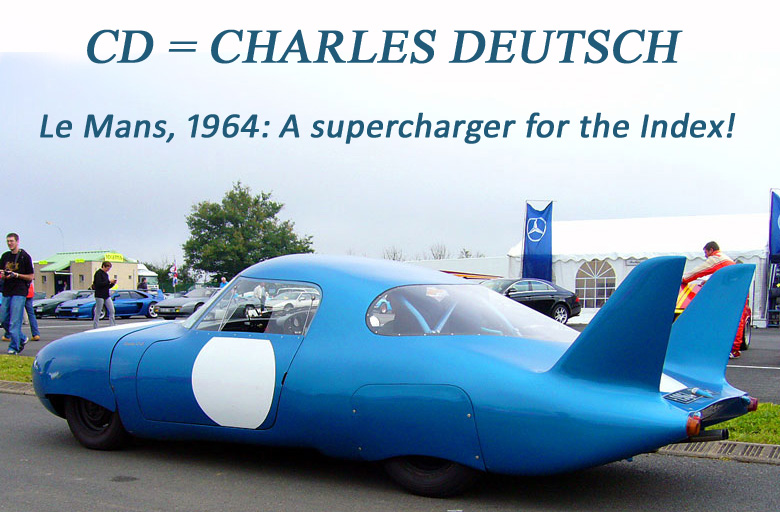
Wow, I wish we had a picture of the engine with its supercharger…
The company that Charles Deutsch started is still going. It looks like they do engineering for a variety of customers, http://www.sera-ingenierie.fr/2en.aspx
SERA did significant work for Porsche especially on its most radical type 917s for Le Mans.